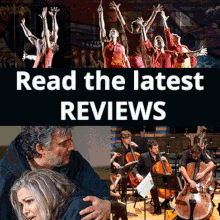What is it about traditional, classical ballet that audiences are so enthralled by? “People are comfortable with the narratives they’re familiar with. The classics are gentle and non-confrontational. They’re about the beauty and purity of the lines, the movement in space, combined with the music. We couldn’t be luckier, could we?” So says former Royal Ballet ballerina, Darcey Bussell.
Audiences still flock to see classical ballet and need persuading when it comes to triple bills. While mixed bills do appear to attract younger audiences, many ballet-goers are reluctant to give up their staple diet of Swan Lake and Giselle. Indeed they cannot seem to get enough of it.
In spite of this, some dance enthusiasts believe that classical ballet is dated and sometimes significantly problematic. I spoke to three well-known advocates of classical ballet, with more than 150 years of experience between them, to find out some good reasons to hang onto the legacy.
For Bussell, it is the simplicity of the genre that is so essential. “It’s so lovely to go back to something that isn’t overly ‘designed’ or clever,” she says. “It’s pleasurable on the eye. If you go back to Roman architecture, it’s about the simplicity of the lines. You take a breath, because of the symmetry and the quality of it all. That’s what you’re looking at with classical ballet, no fuss, no affectations.”
Cynthia Harvey, former ballerina with American Ballet Theatre, dance partner of Mikhail Baryshnikov and recently departed artistic director of the Jacqueline Kennedy Onassis School, would likely concur. She ascribes the value of the classics to their longevity. “If it’s lasted more than fifty years, it’s for a good reason. Think Mozart, Beethoven or The Beatles, they’ve stayed with us for a long time. The New Yorker recently suggested Akram Khan’s Giselle brings more relevance to today and that we should stop doing the old classic version. Some of these older ballets have historic content. Why do we need to change it because it doesn’t apply to today?”
“For me classical ballet communicates a different concept from what you get in reality,” Harvey continues. “It’s fantasy… it’s not realism, as you see on the news. I feel as if we’re reading into things too much now and becoming overly sensitive. I get that today’s generation want to find relevance. But don’t get rid of the original just because you want make change.”
The incoming director of English National Ballet and director at Semperoper Ballett in Dresden of 17 years, Aaron S. Watkin, echoes that sentiment. “In order to know where we’re going, we need to know where we’ve been. Classical ballet is the fundamental base of organised dance, the dance system and everything that is studied and learned. It also demands personal mind-strength, physical strength, coordination, musicality, everything.”
For Watkin, classical dance should be an integral part of a wider repertory. “I don’t believe that you should be raised solely on classical, on modern, or neo-classical. Nowadays it’s not enough to do one thing, you have to do everything. So, why wouldn’t classical ballet be relevant? Imagine taking that out of the equation. What would we have? However, I do think it’s important for it to be presented in different ways, more about the connections and not just the pictures. It’s not static, it should be internally moving.”
For dancers’ bodies, a training in classical technique is essential. Darcey Bussell again: “With choreographers now, they ask so much of a young dancer’s body, but those bodies would never be able to do what they do unless they had the strength of classical technique. For me it’s about understanding your centre, your alignment, your posture and where it comes from. In the classical repertoire, the education you get from the training, sets you up on the strongest path and I think even contemporary dancers will agree. Their love might be with contemporary but without that experience of learning classical ballet in its purest form, they wouldn’t be as strong as a contemporary dancer.”
I am curious to know how classical dancers constantly cope with juggling different disciplines when they change programmes. Bussell explains: “classical ballet is much harder on the body. You’re so exposed. You can’t hide, it’s very obvious when someone is faking it, but classical ballet needs contemporary dance. They work well off each other.”
“Contemporary dance is a great tool to learn freedom of the upper body,” Bussell continues. “It can enhance classical ballet. I do love it when people have their own take on things… We do have to be much cleverer there and think of the audience as a wider, broader pool of individuals. I don’t think there’s any shame in that. Of course, we come back to the classics because they're our history, it’s how it started and we respect that quality of work, the choreography, the music.”
Harvey expands: “Sometimes in this culture we are trying to arbitrarily impose our views (probably people think I do!). I don’t think that these old ballets are communicating that women are weak or meek or mild – I didn’t feel that as a dancer, but I think the argument is that this doesn’t represent the women of today. I think of what Matthew Bourne did with his Swan Lake: he modernised it and captured the essence of the story, without having to get rid of the old versions.”
Watkin also talks a little about those choreographers seeking to return to the very early versions of the classics. “I think it’s useful to see original versions of ballets to see what the intent was. I do have issues sometimes knowing if these really are accurate representations, because they’re working from very old notation. But ballet is like a vault. I also think that if Petipa was alive today with the dancers and technology that we have now, those ballets would evolve. I think they are valid as a historical reference for us to see where we’ve been in order to know where we’re going.”
Harvey extols the virtues of classical training. “Even my contemporary and hip hop dance friends go to ballet class, all of them. It’s the base, it’s their foundation. You can’t get rid of it. I think we need to modernise syllabus training. We just need to add to what we have. … Getting rid of things is not the answer – enhancing things is. With normal ballet training, the base is sound. If you want to add more foot warm-up, that’s your option as a teacher – you don’t have to follow a bible. It’s the same with a choreographer: you have to know where your base is so that you can have the freedom to embroider. I’m not saying classical ballet is the only way (I love contemporary dance by the way!).”
Harvey emphasises the escapism of classical ballet. “Classics should remain because it’s communicating something other than what you’re living today. There is an aspect of the story that they can relate to … but it’s fantasy, it’s entertainment.”
Bussell, Harvey and Watkin all agree that music is essential classical ballet. This is not to say that there isn’t a future for putting new music together with classical ballet, but composers such as Tchaikovsky, Massenet, Lizst, Chopin, Debussy and Rachmaninov are still the cement that draws the public to watch this particular combination of the arts – choreography, music, design. Each element contributes to the spectacle, one which, however much we seek innovation, still attracts the largest dance audiences worldwide.




